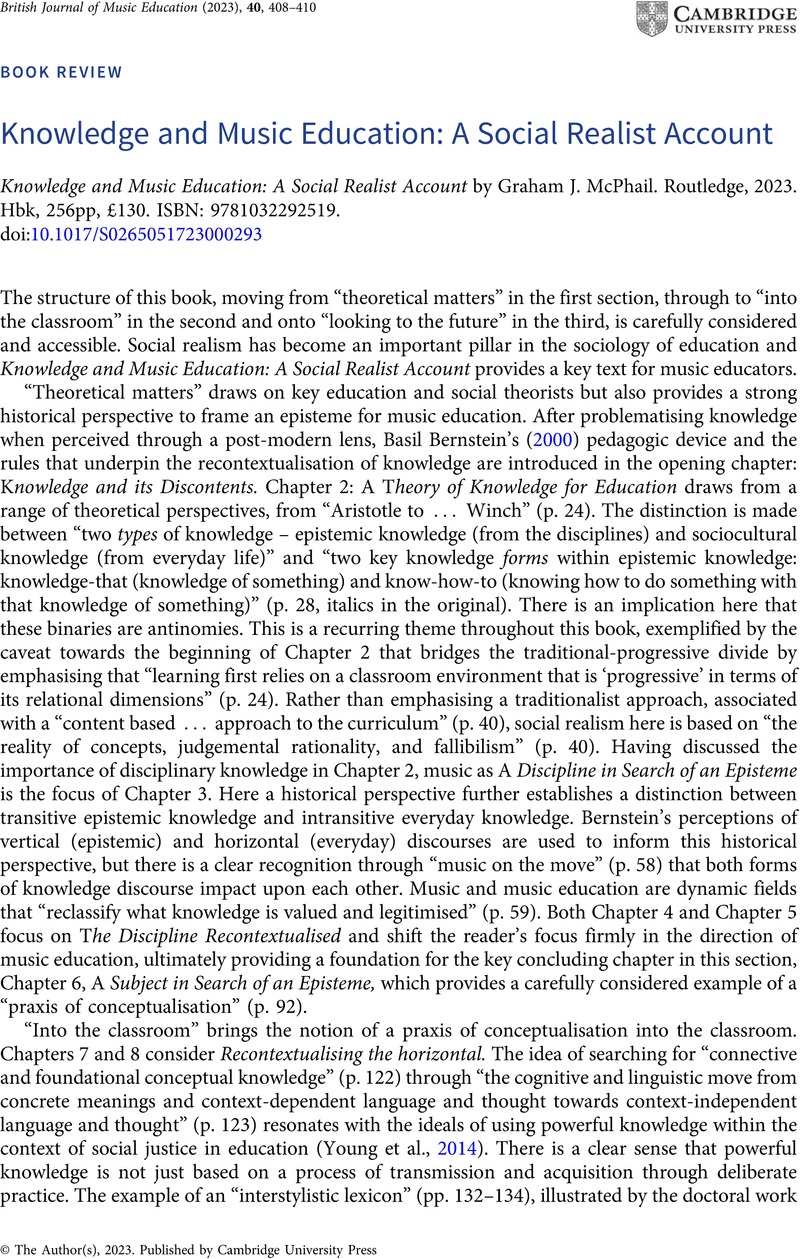Crossref Citations
This article has been cited by the following publications. This list is generated based on data provided by Crossref.
Fautley, Martin
and
Daubney, Alison
2024.
Editorial – What do we know in music education?.
British Journal of Music Education,
Vol. 41,
Issue. 2,
p.
127.




